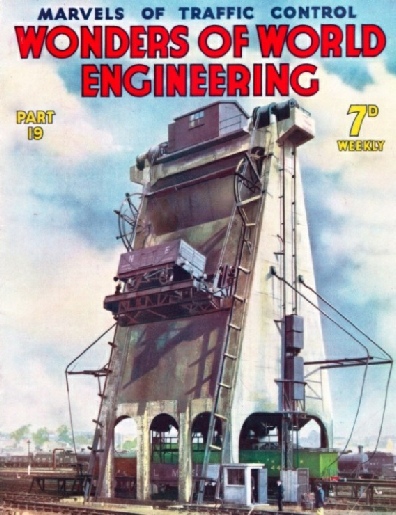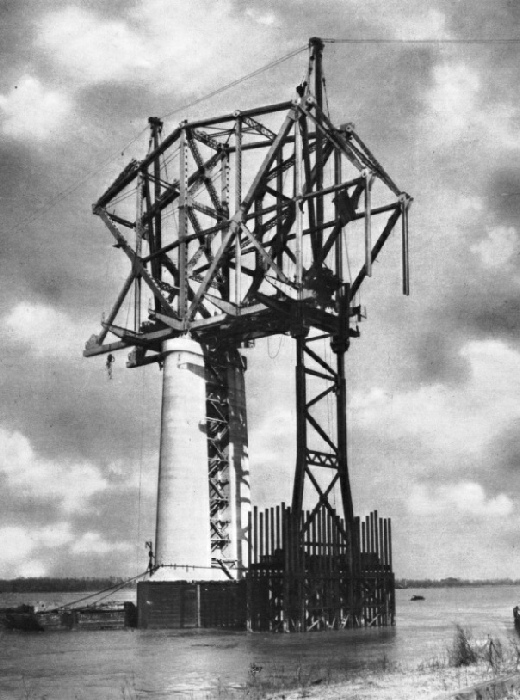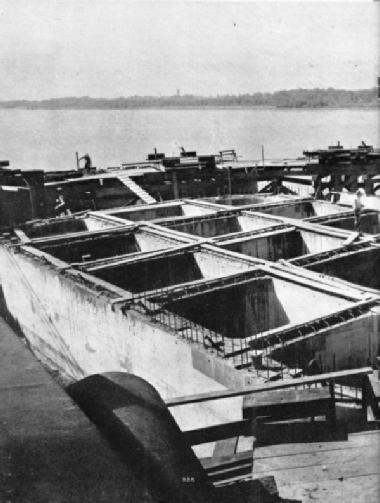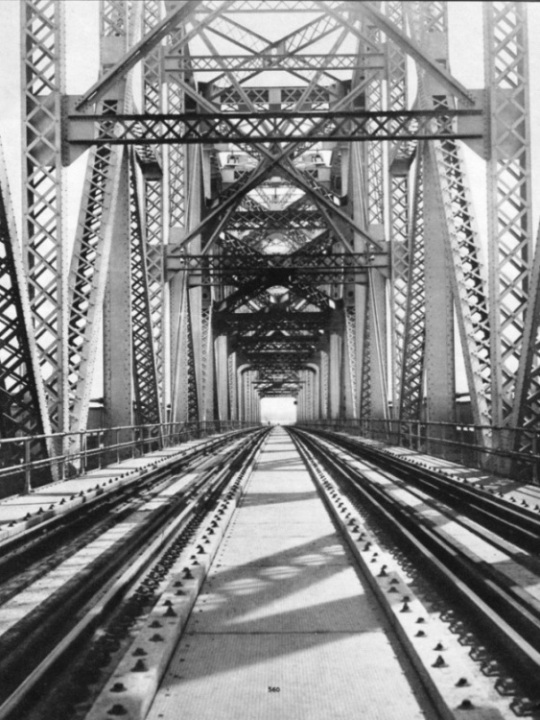

© Wonders of World Engineering 2014-




Part 19
Part 19 of Wonders of World Engineering was published on Tuesday 6th July 1937, price 7d.
Part 19 includes a photogravure supplement showing the construction of the Huey Long Bridge across the Mississippi, illustrating the article entitled Across the Mississippi.
The Cover
The cover of this week’s part shows the locomotive coaling plant at Doncaster, Yorkshire, one of the main locomotive centres of the London and North Eastern Railway. A truckload of coal is seen being raised to the top of the chute down which the coal is discharged into the tender of the locomotive below.

Contents of Part 19
The Road to Hudson Bay (Part 2)
The building of the Hudson Bay Railway and the establishment of the port of Churchill on the shores of Hudson Bay. This chapter is concluded from part 18. It is the sixth article in the series Railway Engineers at Work.
Modern Traffic Control
A network of complicated electrical apparatus, entirely automatic in its action, now controls the traffic flow at nearly every important road intersection in the large towns and cities of Great Britain. Enormous progress has been made in controlling traffic by means of light signals, and the operation of these amazing devices is described in this chapter.
Across the Mississippi
Two trunk railways and two great national roads have been united by the building of the Huey Long Bridge across the Mississippi near New Orleans, Louisiana. The bridge was opened on December 16, 1935. It carries a great main road and an important railway and, with its approaches, has a length of four and a half miles. This chapter is the sixth article in the series Linking the World’s Highways.
Across the Mississippi (photogravure supplement)
Contents of Part 19 (continued)
The Turbine Locomotive
One of the most interesting features of rail transport has been the application of the turbine principle to locomotives. This chapter tells how the principle of the steam turbine has been applied to locomotives not only in Great Britain but also in other countries. An interesting locomotive driven by turbines was produced little more than ten years ago by Herr Zoelly, after a remarkable series of experiments in Switzerland and in Germany. The most recent and the most varied developments of the turbine locomotive are largely due to the work of the Swedish engineer Ljungstrom.
Moscow’s Great Canal (Part 1)
Part of an extensive system of ship canals linking the great waterways of Soviet Russia with the sea, the Moskva-Volga Canal enables vessels to pass from the Volga to the Moskva, the river on which lies the capital city of Moscow. On May 1, 1937, one of the greatest engineering achievements of Soviet Russia was inaugurated. This is a canal, nearly eighty miles long, which links the River Volga with the Moskva River. This chapter is concluded in part 20.
Across the Mississippi:
Photogravure Supplement
THE RAILWAY DECK of the Huey Long Bridge, seen through the main cantilever structure. The handrails of the upstream and down-stream roadways can be seen outside the truss members. These roadways are supported on brackets cantilevered out from the main members of the span.
Foundations for the Huey Long Bridge
A CONCRETE CAISSON for the foundations of one of the main river piers of the Huey Long Bridge. Dredging operations are under way. Sand is being removed from inside the fifteen dredging wells of the caisson and the caisson settles gradually as the dredging progresses. The lower edge of the caisson was sunk to 170 feet below the low-water level of the river.

Across the Mississippi:
Photogravure Supplement
BUILDING OUT THE SUPERSTRUCTURE from the main river piers. The steelwork was built out in either direction from the pier. The work proceeded in such a manner that the weights on either end were balanced over the pier and the bent of the falsework shown on the right side of the concrete pier shaft.


